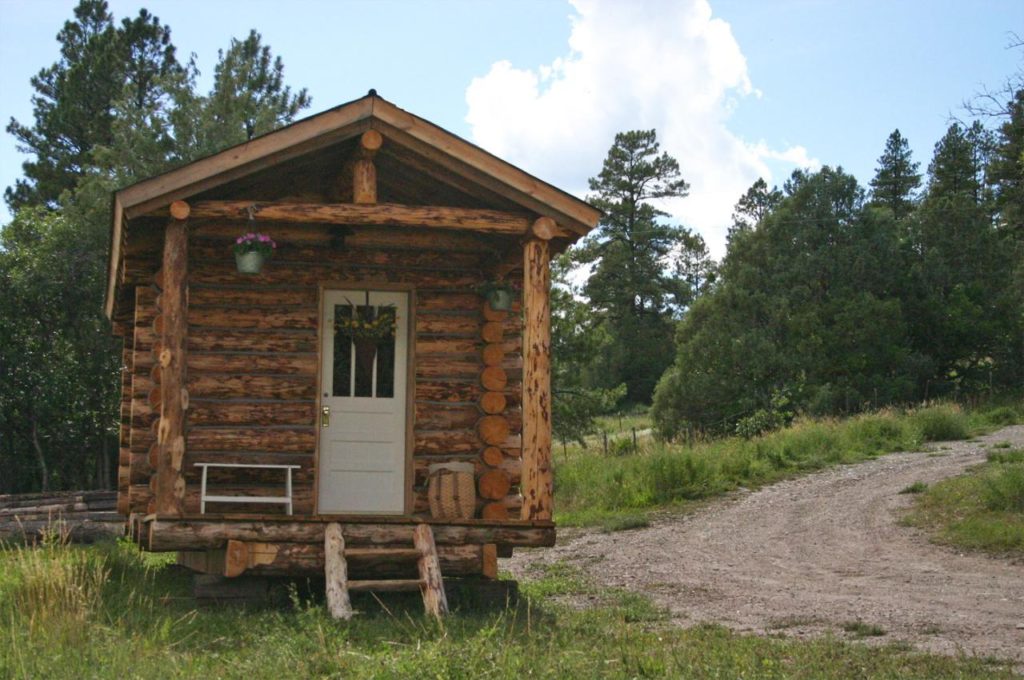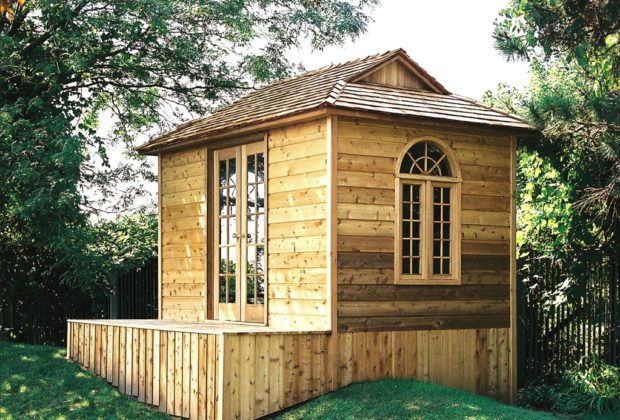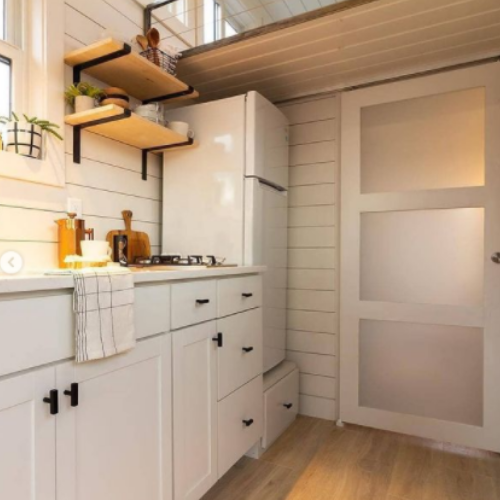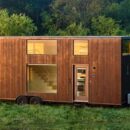The tiny house movement particularly popular in the US, Australia and New Zealand, with growing communities in Fresno, California, and Spur, Texas took off after the 2008 financial crisis, when many young people decided to build affordable compact homes. The movement itself originated in the 1970s but you can find tiny homes going back in time before we have any records. It’s popularity can be seen with the advent of TV shows like Tiny House Hunters and the Netflix series Tiny House Nation. This media attention shares knowledge and possibility, and makes a tiny home totally possible even for those with no building experience.
Youtube and Social media continues to capture the hearts and minds of enthusiasts. From forums full of ideas, tips and tricks, to YouTube tiny house tours showing the potential possibilities, not forgetting Facebook groups and communities and steadily growing UK groups with more than 15,000 members.
Pinterest and Instagram posts boast over 2 million posts tagged with #tinyhouse.
The tiny house movement has helped people learn about another way to live their lives from international attention on Oprah, BBC, ITV, CNN, AP, Guardian, Huffington Post, NBC, PBS, and so many more.
This is more than just building and living in a small space, the tiny house fad has become a social movement. People are downsizing the space they live in, minimising, and living with less. People are embracing the minimalism movement which is another social movement with millions of followers and goes hand in hand with the Tiny House Movement. There is so much freedom that accompanies the tiny house lifestyle, it is about more than simply living in a small area.
Do you want to become part of the Tiny House Movement?
It may seem daunting to those who haven’t tried tiny house living. There are many benefits to tiny home living and the minimalist philosophy. People may join the movement for many reasons, but the most popular reasons include financial concerns, environmental concerns, and the desire for more time and freedom.
Finance
The tiny life gives great financial advantages and provides the ability to live a lifestyle filled with a little bit of adventure. For most people, a huge part of their income goes towards their accommodation! Many people will spend a lot of stress working out how to afford their homes. Buying a house can equate to at least 15 years of working over your lifetime just to pay for it. The high cost of owning a “normal” home, plus expenses 80% of people are living payday to payday.

People work hard so that they can buy much bigger houses than we need. They continue to work, so they can buy more stuff to fill their houses, stuff that they probably don’t need to buy anyway. Many people are tired by the lifestyle consumerism and capitalism created forcing them to adopt busy schedules and obligations. People tired of the “system” and of running in the rat race.
In this current day and age there are serious issues, concerns, and problems of the current day with Tiny Houses being a product of those concerns. Tiny Houses offer an easy journey to greater financial freedom, a smaller environmental footprint, and ultimately a self-sufficient life. The tiny home movement enables you to live a life on your own terms.
Who Lives in a Tiny House?
What sort of person buys tiny houses? Well, anyone who is concerned about the simple life, or environmental consciousness, self-sufficiency, and saving money. The tiny life allows for you to have more time and freedom to enjoy life's gifts. Tiny houses appeal to a huge range of people. Some tiny house owners are single, while others share their tiny homes with their partners or families. Some park their tiny houses in town, some live out in the country, and some come together to form tiny house communities.
The people who live in tiny houses generally work less hours and use their time off in nature, or working on their own projects. They are enjoying life with less pressure, less outgoing and thus less need to earn lots of money to afford their mortgage.
Choosing to live in a dwelling with no more than 500 square feet of space is probably one of the most life changing experiences you will have. You will literally be living in less than quarter the size of the average new house.
Tiny House Communities
The Tiny Home Community, a group of six tiny houses parked behind a full-sized house came together to form this tiny house community. The four owners met through a website for tiny house owners and after meeting decided to buy some land together for a house with land where they could park their mobile Tiny Homes.
The community is also made up of a family that live in the main house. The rent for the main house they use to pay the mortgage on the property. They share thea garden and vegetables, which they work together to maintain.
There are much larger communities too, some with as many as 30 dwellings like one in Olympia, Washington consisting of 30 tiny cottages spread across The Tiny Home Community and Owned and managed as a nonprofit organization
Each tiny house houses up to 2 people, and a larger community building holds a common kitchen, showers, laundry, and meeting and gathering rooms. Owners pay one-third of their monthly income to rent and share responsibility for maintaining the vegetable patch.
What is a Tiny House exactly?
Usually, a tiny house is no larger than 500 sq ft and no smaller than 80 sq ft. They are easy to maintain, having low energy consumption, and is more affordable to buy outright. Using clever construction, a tiny house allows space for all the typical necessities, such as a living room, kitchen, bedroom, and bathroom, as well as essential storage.
They can be built on foundations, but traditional tiny houses are made with movement in mind and are built on a strong trailer. This gives tiny house owners the freedom to move their home whenever they wish, but more importantly it avoids expensive planning permission.
A tiny home is so much easier to maintain because the average tiny home size is significantly smaller. Imagine the time you’ll save keeping up with the average tiny home square footage (just 186 square feet).
It is reported that 68% of tiny home owners have no mortgage (compared to 29.3% of all U.S. homeowners) and that more tiny home owners (78%) own their own home—plus, 55% of tiny home owners have more savings than the average person.
Types of Tiny Houses
There are a very wide range of Tiny houses. They can be an underground hobbit home, a log cabin in the woods, a small waterfront cottage, a converted shipping container, or an A-Frame house.
Disadvantages of Tiny Houses
Living in a tiny house isn’t always fun. The lack of space has a few obvious drawbacks – and a few others too.
- Storage Space. For most people, moving into a tiny home means getting rid of a lot of belongings. This can mean giving up favourite possessions, like keep-sakes, ornaments, books, exercise equipment, excess clothes and shoes. Some people even have to give up their pets
- Living Space. A tiny house can not accommodate a large kitchen or bathroom. The bathroom is usually small and consists of a toilet, sink and shower. If you wanted a bath you would probably need to sacrifice something else to make room. Also, full-sized kitchen appliances take up a lot of space so downsizing is needed .
- Visitors. YOu aren’t going to be hosting any big parties unless you don’t mind having them outside.
- Initial Cost. Getting a loan can be just as difficult than it is for other home buyers. It isn’t possible to take out a mortgage, because banks don’t consider a tiny house to have enough value to make good collateral.


